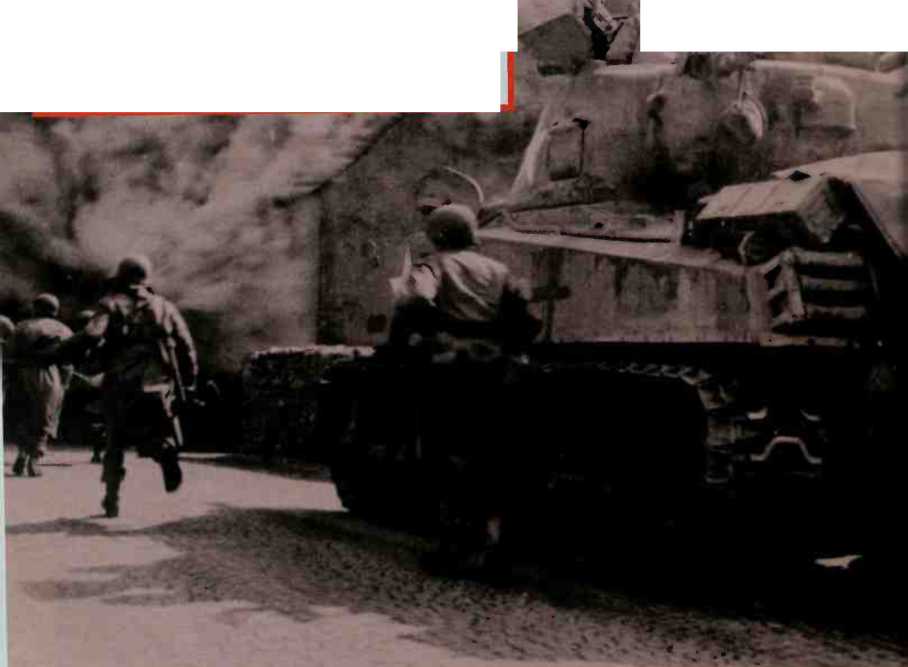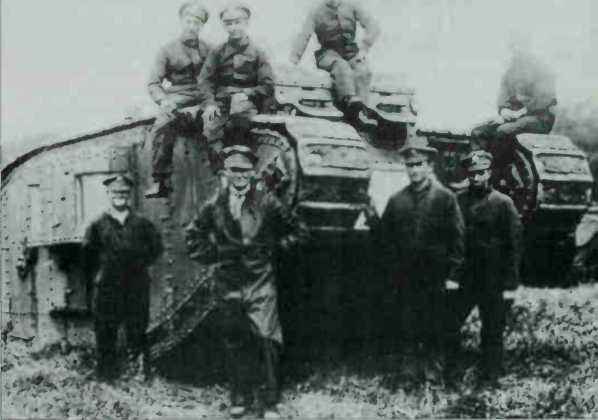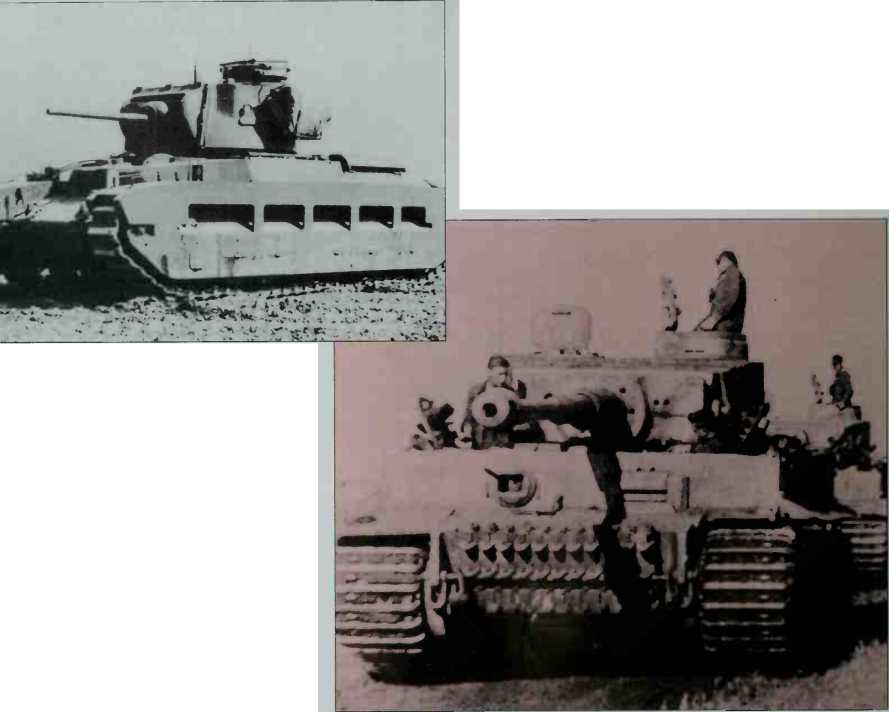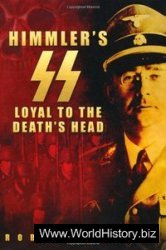

The tank came of age during World War II and proved to be a battle winner - or loser. The first tanks had been designed by Sir Ernest Swinton and saw action in the Somme offensive of World War I in 1916. Caterpiilar tracks enabled them to cross treacherous terrain where no other vehicle could go. They were equipped with one or more guns, the crew sitting behind armour plating and firing off salvos at the enemy.

Above: Tank crews during World War I were rightly delighted with the new hardware, which provided them with ample protection. But in World War II, a variety of anti-armour weapons existed to make life hell for the tankman.
Far left: The men of an armoured division running through the smoke-filied streets of the German town of Wernberg.
NOW German general Heinz Guderian used the outbreak of World War II to put his own theories about the use of tanks to the test. Tanks should not be pinned down to flanking foot soldiers, he argued. Their purpose was to break out against the enemy, putting a speed into land-based warfare which it had never known before.
With that in mind, he formed his highly efficient Panzer divisions. The tanks were fast but lacked adequate protective armour. Nevertheless, they were an integral part of ‘Blitzkrieg’, the lightning war, a tactic with which Hitler easily won Poland, France, Holland and Belgium.
The technique took Britain and France by surprise. Although France had an enormous number of tanks at its disposal, 2,475 to be e. xact, their effectiveness w'as muted because of the old-fashioned way in which they were deployed. Instead of combining the firepower as Guderian did, each tank was evenly spaced down a long defensive line. In time Allied
When a tank ‘brewed up’, the escape hatches were wholly inadequate, or blocked
Commanders mimicked Guderian to get the best out of their tanks. Used individually, they were easy targets.
If tankmen in World War I were better protected than their colleagues in the infantry, the same could not be said of their counterparts 20 years on. In fact, there were few infantrymen who would willingly change places with tankmen. For while tanks stole a march on the enemy in the the killing fields of Flanders, technology had now caught up. Now there was a wide range of anti-armour artillery designed to knock tanks out. Men inside a stricken tank had little or no chance of escape.
And for the first three years of the war, German tanks and anti-tank weapons were appreciably better than their British counterparts. For example, the Mark II Matilda was known for its weak steering clutches, the Valentine offered only limited vision to its commander, the Crusader was mechanically unreliable. It took only an armour-piercing shell from one of the new breed of anti-tank guns used by the Germans to finish them.
That’s when infantrymen remained heartily glad they had the job they did. I'or when a tank caught fire, or ‘brewed up’, the tiny escape hatches on the tanks were wholly inadequate and, in any case, were often blocked. Sometimes there svas a matter of seconds before fire took a hold and the tank’s ammunition began to explode. Sometimes there was not. Nicknames for tanks during the war included ‘steel coffins’, ‘tommy cookers’ and ‘Ronson burners’, because, like the products of the same name, they would always ‘light first time’.
One witness gruesomely detailed the effects on the men trapped inside: ‘Little blackened dolls about two tee! high have been found m tanks. O these were men.’
As the war progressed, the Germans learned about the shortcomings of their tanks, which were

Left: Matilda tanks were favoured by the British military but they failed to match the firepower of German Tigers, pictured below.
¦ THE DEADLY 88 ¦
Lacking in firepower and suffered from flimsy armour. Their most painful lesson came on the Eastern front when their troops encountered the fearsome T-34 tanks of the Russian armoured divisions.
Accordingly they introduced the Panther, in July 1943, and the Tiger, in September 1942, which were battle winners thanks to the enormous range of their guns, quite outstripping the British models, which were unable to get close enough to counter-attack effectively.
By the time the British developed the six-pounder gun, the Germans had in their armoury the heavier 75mm weapon. As the Americans caught up, with their own 75mm gun, the Germans leaped ahead again, fitting the deadly 88mm guns, which were originally designed as anti-aircraft guns but wreaked havoc when mounted on the Tiger tank.
As an illustration of the immense advantage kept in hand by the Germans in terms of tank technology, a single Tiger tank operating in Normandy knocked out 25 British tanks, 28 armoured vehicles and killed an additional 80 infantrymen.




 World History
World History









